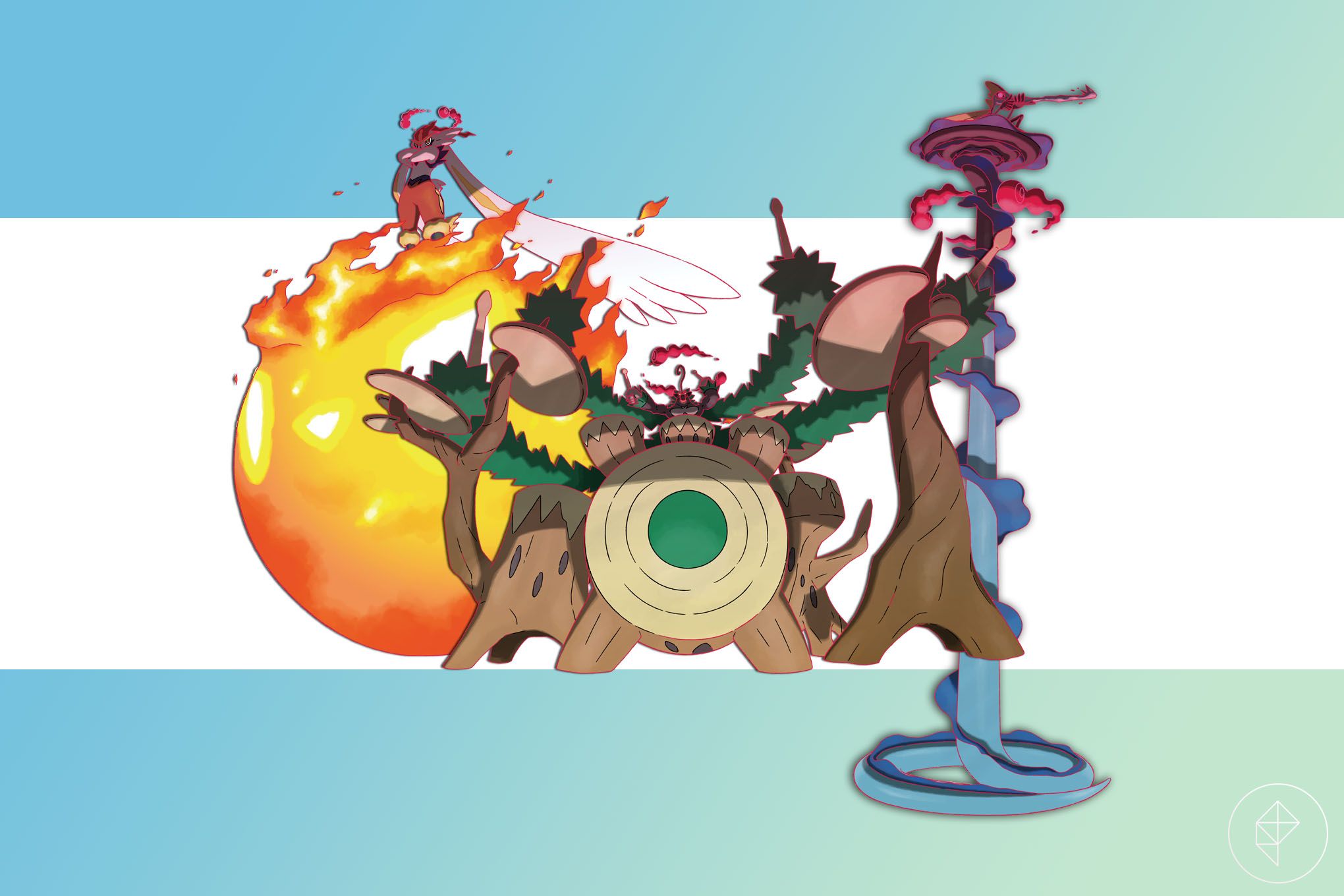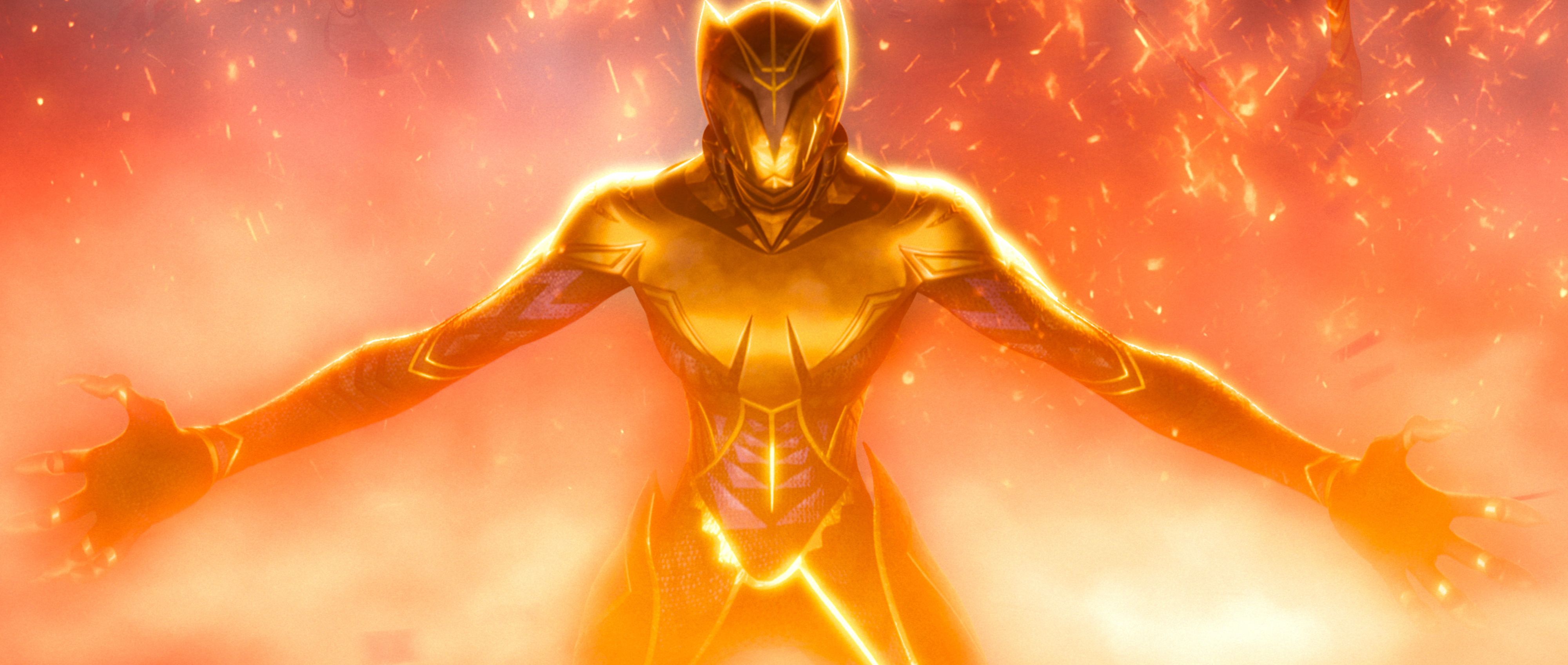In a 2018 interview, Chadwick Boseman made a surprising claim. He argued that the real villain of Black Panther was his character, Prince T’Challa, who represents the desire to hold onto power and privilege above all else. Conversely, the film’s hero was its highly sympathetic antagonist Erik Killmonger (Michael B. Jordan). Killmonger’s father was a Wakandan prince and a War Dog —a member of the isolationist nation’s intelligence service, who believed the highly advanced country should work to make life better for people of African descent around the world. In Black Panther, Killmonger takes up his father’s cause and challenges his cousin for the throne. T’Challa represents the country’s conservative status quo, while Killmonger is a violent revolutionary pushing for change.
Eyes of Wakanda, a four-episode animated miniseries now streaming on Disney Plus, reinforces Boseman’s theory. By focusing on different War Dogs throughout history, showrunner Todd Harris (a long-time storyboard artist and illustrator making his directorial debut) posits that Killmonger is actually the greatest hero in the Marvel Cinematic Universe. His argument is compelling. Who else has actually pushed the technologically advanced nation to care about its neighbors?
Getting to that point means most of the characters in Eyes of Wakanda share the same unfortunate role as T’Challa. They’re ostensibly heroes but really just people who are complicit in the suffering of everyone unfortunate enough to be born beyond Wakanda’s impenetrable borders. Like Ironheart, Eyes of Wakanda is hard to enjoy because it purposefully makes its protagonists selfish and destructive without providing the depth required for a satisfying antihero narrative.
The second episode, “Legends and Lies,” is an outright tragedy, a retelling of the Trojan War imagining the mythical Ethiopian king Memnon (Larry Herron) as a Wakandan who spends nine years of his life undercover to reclaim an artifact in the possession of the Trojans. Wakandan callousness is played more for laughs in “Lost and Found,” which follows the cavalier agent Basha (Jacques Colimon) as he runs afoul of the 1400s version of the Iron Fist (Jona Xiao) after stealing a sacred dragon statue with a tongue made of Vibranium.
Wakanda’s advanced technology makes it very hard to cheer for its people, who have the upper hand in all conflicts unless they’re fighting other Wakandans. (Wakandan innovations have always seemed impressive in the MCU, but they’re also nothing Tony Stark can’t keep up with.) In Eyes of Wakanda, Basha flies a jet 500 years before the first plane and battles the Iron Fist on trains very similar to the ones where Killmonger and T’Challa did battle in Black Panther. Considering how far ahead of their time the Wakandans are, it feels needlessly cruel to make War Dogs live in exile for so long in the name of secrecy and extremely selfish to not share some of their wonders with the rest of the world.
When the show does present more heroic characters, they’re hampered by simplistic writing and trying to cram too much into four 30-minute episodes. The series premiere, “Into the Lion’s Den,” is its most straightforward tale. It follows the stubborn warrior Noni (Winnie Harlow) on her mission to capture a rogue Wakandan general known as The Lion (Cress Williams), who is using stolen artifacts to conquer the ancient world. Ostensibly his actions are meant to reinforce Wakanda’s code of isolation, but The Lion is an unsatisfying strawman of a villain, claiming to offer prosperity even as he builds an empire in bondage. He’s exactly the sort of generic power hungry villain that dominated the MCU before Killmonger broke the mold.
Eyes of Wakanda is also surprisingly brutal in its depictions of violence and war — particularly in the beating unleashed on captives in its first episode — which makes writers Marc Bernardin and Geoffrey Thorne’s attempts to lighten things up with some typical Marvel banter feel tonally discordant. The choice to make a centuries-hopping anthology also forces the show to rely on broad character archetypes (the inexperienced prince, the gruff mentor, the cavalier field agent, etc.) rather than devote any time to actual character development. Memnon is the only character with a meaningful arc. The rest come across as hoaky caricatures.
All these narrative shortcomings are frustrating because Eyes of Wakanda is visually stunning. Axis Animation uses a hand-painted style with vibrant colors emphasizing golds and purples befitting Wakanda’s regality. The fights are also creatively choreographed, like a skirmish in a trophy room where Basha fumbles with items he doesn’t know how to use. (As an extra visual flourish, part of that fight scene is depicted in the reflection of blades scattered on the ground.) Lighting is particularly well done throughout the anthology, from the lanterns glow to the horizon depicting the vastness of The Lion’s fleet to the bright, baleful eyes of the alien threat in the season finale.
Like What If…?, Eyes of Wakanda isn’t a true anthology, with all of its stories linking back to each other as they build to the idea that Wakanda must abandon 3,000 years of tradition. Centering this story on the War Dogs means very little of Eyes of Wakanda even takes place in Wakanda, which feels like a missed opportunity to expand upon the country’s culture and history. It’s easy to imagine a more ambitious version of the series that didn’t just retread ground paved by Black Panther by exploring Wakanda’s failings but instead leaned into the joy its Afrofuturist setting brought to so many viewers. Instead, its Wakanda is neither a utopia nor a force of liberation. It’s just a place stuck in the past.
All four episodes of Eyes of Wakanda are available to stream now on Disney Plus


![1st Aug: Children Ruin Everything (2024), 4 Seasons [TV-14] – New Episodes (6.3/10)](https://occ-0-82-999.1.nflxso.net/dnm/api/v6/Qs00mKCpRvrkl3HZAN5KwEL1kpE/AAAABeMYoHfE4Zj472WXcYwrPg7KPABf4VZVxJWhRe-sLrTDQn6CV0EntcOKM4egPz9l3s-7DMGga0ykRL3hOvV5Nu1sd3AIeifJn3Y5IyJQYeH0u36n2cs9wND_3cq7WIeRjCA--R5z7Ux-DQDr9ArlRi58VkikzVzqAgbqUKP6.jpg?r=248)





![2nd Aug: Beyond the Bar (2025), Limited Series [TV-MA] (6/10)](https://occ-0-7324-92.1.nflxso.net/dnm/api/v6/Qs00mKCpRvrkl3HZAN5KwEL1kpE/AAAABeYc2yX5PE-HbEwF68Am-cIpW3EgtsEZKG6oESq8mwSf2QqvtimRBVQx_zQMAyA0_J6u3GcQ4tCBhdMhfkKXw8byt1UJihV6bcDnKOvgTeXtUAOr3x9Ckz-W6jFQjfkkL1vMoRpy-lhGMjvKq3dnpTuqmixSWRPg8LwvVLlRKnr05g_4rZ8-I9bpTlVyKTmCs93vA6i8BKZ1YQOziY1vBxIF8kWoaP1Ewm8EZ0ybtDmKKpQV4MGExRPzA0NZq9s_URx2kU3uwJSeGwmhGPZxcAw3qyrZCqrqGwRHkglFsNElmy2PHpbvGFV6g6qBl21A1wmGBHZZ1nhNcJZtJ2F96hndTg.jpg?r=64d)



